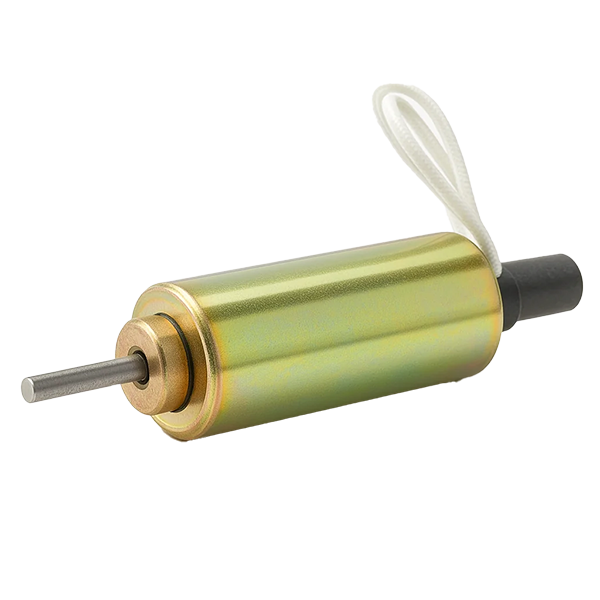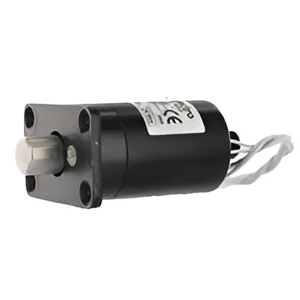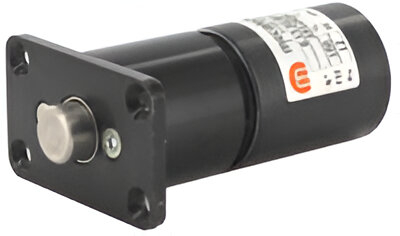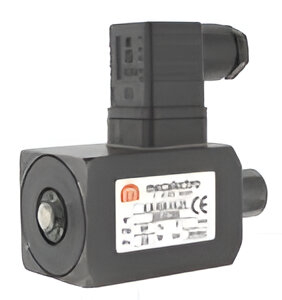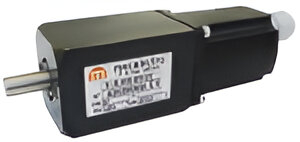Solenoids
-
8021152
Length: 39.5mm x Ø13mm
M10 Fixing
Labeling/Effect:
100% 4W
40% 8W
25% 13W
15% 17W
5% 40W -
8021362
Length: 39.5mm x Ø13mm
M10 Fixing
Labeling/Effect:
100% 4W
40% 8W
25% 13W
15% 17W
5% 40W -
B12
Locking: Powerless
Power supply: DC
Position monitoring: No
Max radial force: 40 kg
Stroke length: 5 mm
Features: Automation -
B16
Locking: Powerless
Power supply: DC
Position monitoring: No
Max radial force: 100 kg
Stroke length: 13 mm
Features: Access control -
B18
Locking: Powered
Power supply: DC
Position monitoring: No
Max radial force: 100 kg
Stroke length: 13 mm
Features: Access control -
B20
Locking: Powerless
Power supply: DC
Position monitoring: No
Max radial force: 60 kg
Stroke length: 11 mm
Features: Automation -
B21
Locking: Powered
Power supply: DC
Position monitoring: No
Max radial force: 60 kg
Stroke length: 13 mm
Features: Automation -
B22
Locking: Powerless
Power supply: AC & DC
Position monitoring: No
Max cutting force: 135 kg
Stroke length: 11 mm
Features: Very compact -
B24
Locking: Powered
Power supply: AC & DC
Position monitoring: No
Max radial force: 135 kg
Stroke length: 11 mm
Features: Very compact -
B24PM
Locking: Powered
Power supply: AC & DC
Positionsövervakning: Med standardkontakt
Max radial force: 135 kg
Stroke length: 11 mm
Features: Very compact -
B26PM
Locking: Powerless
Power supply: AC & DC
Position monitoring: Safety forced opening contact
Max radial force: 135 kg
Stroke length: 11 mm
Features: Very compact -
B28PM54
Locking: Powerless
Power supply: AC & DC
Position monitoring: Safety forced opening contact
Max radial force with bracket: 500 kg
Max radial force without bracket: 1000 kg
Stroke length: 15 mm
Features: Very robust
Solenoids for industrial applications
Solenoids are electromechanical components that convert electrical energy into motion. They play a central role in automation, where they are used to control valves, locks, latches and other mechanical functions with high precision. Thanks to their fast response and compact design, solenoids are used in a wide range of industries – from manufacturing and automotive to medical technology and process automation.
How does a solenoid work?
A solenoid consists of an electric coil with a moving iron core, also called a plunger. When the coil is activated by an electric current, a magnetic field is created that pulls in the plunger. This movement can be used to, for example, open or close a valve, release a lock, or create a linear push or pull force. When the current is interrupted, the plunger returns to its original position with the help of a spring or gravity.
Our range of solenoids
At Elektrokomponenter, we offer a wide range of solenoids for different needs. Here you will find both standardized and customized models – everything from compact, tubular solenoids to powerful linear variants with long stroke. Our products are available for both AC and DC operation and can be delivered with different cable lengths, connections and IP ratings depending on environmental requirements.
Solenoids for energy-efficient operation
For applications where low energy consumption is important, we offer self-holding solenoids. These are equipped with a built-in permanent magnet that allows them to maintain their active position without drawing continuous current. This provides significant savings in applications where the component often needs to be activated for extended periods.
Designed for demanding environments
Several of our solenoids are IP65 rated and can withstand harsh conditions with dust, moisture and vibrations. This makes them suitable for use in industrial environments where operational reliability is crucial. All models are thoroughly tested to meet high demands for service life, repeatability and reliability.
Technical support and documentation
Technical documentation is available for each solenoid, including data sheets, drawings and assembly instructions. We also offer advice and technical support to help you choose the right component for your application. Our goal is to make it easy for you to integrate our solenoids into your design, whether it is a new product or an upgrade to an existing system.
Why choose solenoids from Elektrokomponenten?
With extensive experience in electromechanics and a wide product range, we can offer both standard solutions and customized options. Our solenoids are of high quality and are built to perform – every day, year after year.
Frequently Asked Questions About Solenoids
What is a solenoid?
A solenoid is an electromechanical component that converts electrical current into mechanical motion by generating a magnetic field. It is often used to control valves, locks, or mechanical movements in various types of automated systems.
How does a solenoid work?
When electric current is passed through the solenoid coil, a magnetic field is created that pulls in a moving iron core – also called a plunger. This movement can be used to push, pull or unlock various mechanisms. When the current is cut off, the plunger returns to its original position with the help of a spring or gravity.
What types of solenoids are there?
There are several types of solenoids, including linear solenoids, tubular solenoids, and self-holding solenoids. They can be configured to pull or push and come in both AC and DC varieties. Self-holding models use a permanent magnet to hold position without constant current.
What are solenoids used for?
Solenoids are used in a variety of applications, such as door locks, solenoid valves, industrial machinery, medical technology, and automotive systems. They are suitable for any situation where fast and precise movement is required through electrical control.
What is the difference between an AC and a DC solenoid?
An AC solenoid is powered by alternating current and is often more powerful in short pulses, but can vibrate more. A DC solenoid is powered by direct current and offers smoother and quieter operation, making it suitable for applications with longer activation times.
How to choose the right solenoid?
To choose the right solenoid, you need to consider factors such as voltage (12 V or 24 V), stroke length, power requirements, environmental requirements (e.g. IP rating) and whether you need a self-holding function. It is also important to size correctly based on the system's mechanical resistance and cycle frequency.
Can solenoids be customized?
Yes, we offer custom solenoids with any cable length, mounting options, voltage and plunger design. Our technical experts will help you specify the right model based on your needs.

